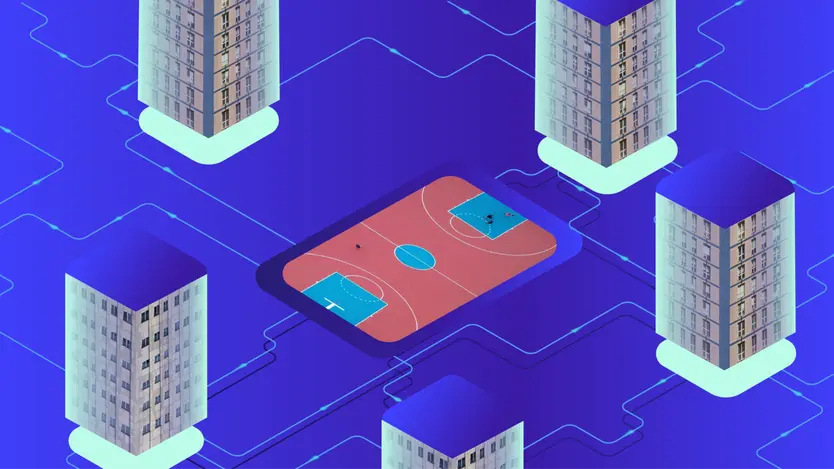Blockchain technology could revolutionise the way we make transactions

With the rise of Bitcoin and other cryptocurrencies, blockchain is rarely out of the headlines. Some see it as a key technology for the future, while others think it’s been over-hyped.
Whether you think blockchain is a disrupter or a disappointment, it is central to cryptocurrency – for now and possibly the future – and is also making its mark on other industries.
So what exactly is blockchain?
In simple terms, Blockchain is a digital ledger that can be used to record and track any kind of data, from medical records to voting habits.
What makes it so revolutionary is that unlike traditional ledgers, which are controlled in a central location – such as a bank, local authority, or government – blockchain ledgers are decentralised.
In fintech circles this is also referred to as distributed ledger technology (DLT). “Distributed” because the data is consensually distributed across a vast, shared network of computers around the world.
What makes blockchain such a game changer, is there is no need for a third party. Currently when we do business we rely on trusted intermediaries, such as banks or lawyers, which takes time and money.
Who invented blockchain?
Blockchain was originally developed by Satoshi Nakamoto in 2008 as a ledger for the cryptocurrency bitcoin. It is not known exactly who Satoshi Nakamoto is, or if it’s a moniker used by a group. However, whoever it was first introduced the concept of decentralised transactions to enable a global digital currency. This culminated in the creation of blockchain.
What is blockchain technology?
Blockchain is a type of spreadsheet, like an Excel document, containing information about transactions. Everyone can see the data on the spreadsheet, but they can’t edit it.
Blockchains are made up of blocks containing digital information (ie the transaction), which are chained together using cryptographic principles.
Each new transaction – no matter how small – generates a new block, with a unique cryptographic hash of numbers and letters, created using an algorithm.
These blocks are added to the chain in transactional order, and each block refers to the previous block, which then creates a blockchain.
When a block is added to the chain it becomes publically available for anyone to view and cannot be changed. It is this immutability that makes blockchain such an attractive proposition for cryptocurrenices (more on this below).
How does blockchain technology work?
Before a block can be added to the blockchain a number of things need to happen:
1. A transaction must be verified. Unlike online transactions, which are verified by your bank or credit card providers, blockchain transactions are verified by a network of computers. These networks often consist of thousands – or even millions – of computers around the world.
2. After the transaction has been verified as accurate, the information is stored in a block. This includes: date, time, amount and the digital signature of both parties involved.
3. This block is then given a unique, identifying hash code, along with the hash of the most recent block added to the chain. Once hashed, the block can be added to the blockchain.
Who verifies each block?
Every blockchain has its army of computers, which are called nodes. It is their job to approve transactions, which is done by solving a complex cryptographic (mathematical) puzzle. The node that solves the puzzle shares the solution with all the other nodes in the network. This is called proof of work. The network then verifies this proof of work, and if it’s correct the block will be added to the chain.
Most people who run full nodes don’t get paid; they are cryptocurrency enthusiasts who want to make sure blockchains are run correctly.
However, there are incentives, which can be accessed via a process called mining. If a miner produces a block that is approved by a consensus of nodes, the miner is rewarded with bitcoins.
At the time of writing, the reward for completing a block is 12.5 bitcoin. With the price of bitcoin currently at around $8,000 (£6,000, £7,000) you would earn $116,250 (12.5 x 9,300) for completing a block. But the odds aren’t exactly stacked in your favour. According to BlockExplorer, the chances of solving one of these problems on the Bitcoin network were about 1 in 5.8 trillion in February 2019.
Is blockchain secure?
The simple answer is “yes” – but you don’t want the simple answer, do you?
Here are three reasons:
- Identifying code
As discussed above, new blocks are always added to the end of a chain in chronological order, with its hash, plus the hash of the block before it.
So, if a hacker tries to edit a transaction, the block’s hash will change, while the next block in the chain will still contain the old hash. This means the hacker would need to update the hash in every block in order to cover their tracks – and bitcoin currently has five million blocks.
Once a block is added to the blockchain it becomes very difficult to edit and impossible to delete.
- Against all odds
The proof of work system also makes hacking hard going. To change a block, hackers would need to solve the same complex math problems tasked by the nodes and miners, which, as we stated above, is no easy task.
- Transparency
Because blockchain is decentralised, it can be viewed by anyone at any time, which means transactions have total transparency. With millions of computers on the blockchain network at any given time, it is unlikely that anyone could hack into the system without being noticed.
Whether blockchain becomes the disrupter it promised to be when it first emerged 10 years ago, it remains central to cryptocurrency and distributed ledger technology.

